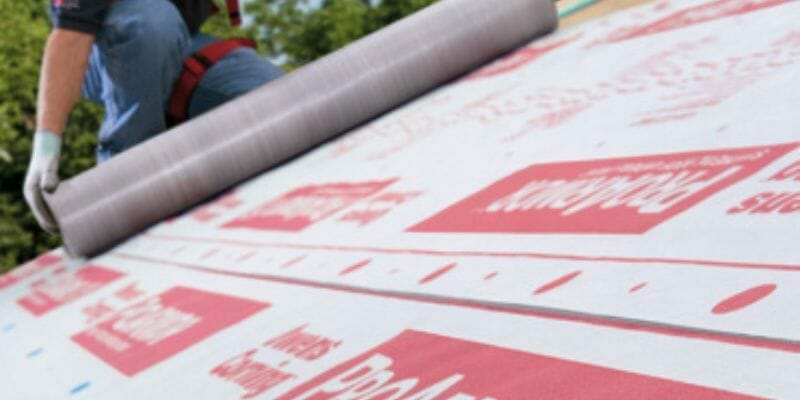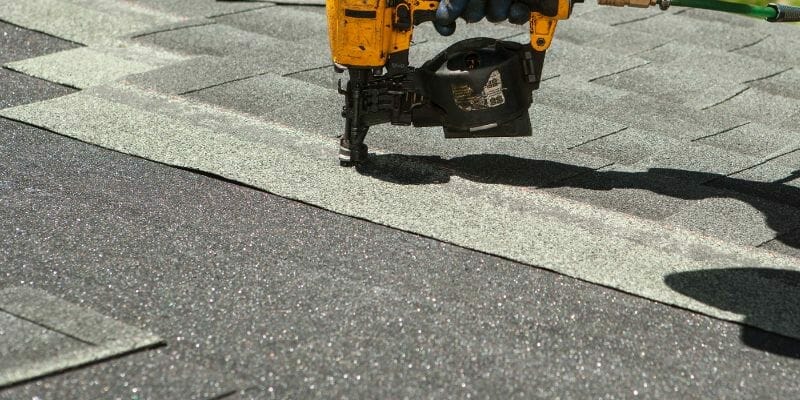As a homeowner, you should put a lot of thought into choosing a suitable roofing material. After all, the material chosen is the first line of defense for your roof to withstand harsh weather conditions. But while focusing on the roofing material, you might ignore the choice of roofing underlayment.
A roofing underlayment is one of the most crucial components of a roofing system that the roofing contractor installs just below the material covering your roof. This blog will compare two major roof underlayment options: synthetic, and felt underlayment. This post explains how these two options differ so that you can decide which type will work best for your project.
What Is Roof Underlayment?
Before we move ahead and discuss the types of underlayments you can install on your roof, let us give an overview of what roof underlayment is.
Roof underlayment is the layer of protection the contractor installs between your roof’s deck and the shingles. The underlayment serves as a base for the shingles and helps to protect them from weathering, wear, and tear. It’s also there to help keep moisture away from your home so you don’t end up with water damage.
Two Major Types Of Roof Underlayment
We hope you now understand how important installing roofing underlayment is for your roof and home security. Therefore it’s crucial to ensure you have the right type of underlayment for your home.
When you decide to install underlayment, you will have two choices, synthetic or felt underlayment. These two options are the most popular in Florida, and we’ll discuss them both in the following section.
What Is Felt Underlayment?
Felt roof underlayment can be made from recycled glass, plastic, or fiberglass. These felt sheets are also called asphalt-saturated underlayments, as the material is saturated with asphalt and crude oil to make them water-resistant.
This is one of the oldest types of roof underlayment available in the United States. Manufacturers have been using felt to create underlayment sheets since the 1960s because it’s durable and can be easily cut to fit any sized space. Felt also has an absorbent quality to it, allowing it to absorb moisture well.
Felt roof underlayment comes in two grades, #15 and #30. The grade refers to how thick the felt is and how long it will hold up against water damage. The lower the number, the thicker the felt and the more resistant it is to water damage.

What Is Synthetic Underlayment?
As the name suggests, synthetic underlayment is made from fabricated or artificial materials such as polyethylene or polypropylene. Introduced in the early 2000s, this underlayment is newer to the industry when compared to its felt counterpart. It boasts higher durability, and tear resistance capabilities. Like felt, this underlayment is also available in multiple thicknesses but is a very lightweight material overall.

Synthetic Vs. Felt Underlayment: A Comparison
In the section above, we have given an overview of both types of roof underlayment. Now we will compare them against each other based on specific criteria.
Durability and Resistance
The purpose of a roof underlayment is to act as a second layer of protection and protect the deck and the interior from water damage. Therefore the underlayment you choose should have high durability. Though felt once ruled the underlayment market, it now seems to be taking a backseat with the arrival of synthetic materials that provide more durability.
The reason is that synthetic roof underlayment uses long-lasting polymers and additives that help the sheet perform much better under harsh weather conditions, and offers more durability. The material is tear resistant and lasts longer too.
Lifespan
A synthetic roof underlayment has an excellent lifespan. It is not a standardized product, and its composition differs with different manufacturers, but overall you can expect them to last between 25-30 years. On the other hand, felt underlayment has a relatively lower lifespan as they are prone to tearing and moisture.
Weight
The weight of the underlayment plays an important factor when hiring a contractor for installation, and will affect the cost you pay for replacing your roofing system.
A felt underlayment is heavier than a synthetic one. The former weighs 15 pounds, whereas the synthetic underlayment weighs only 2-4 pounds. The weight of the material affects the installation process and can increase the overall labor cost. The heavier the material, the more challenging the installation and the more time roofers will require to install it. You will also get more material per roll with synthetic underlayment.
Cost
The cost of the roof underlayment is one of the most significant factors that can influence your final decision. One of the reasons why roofers use felt underlayment is because it’s more affordable. Synthetic underlayment is the more expensive option when compared to felt because of its higher durability and longer lifespan. High cost is one of the few problems with synthetic roof underlayment.
However, synthetic underlayment proves to be cost-effective in the long run. Its durability does not require much maintenance or frequent replacement compared to felt.
Which One Should You Buy?
Both options have pros and cons, but after comparing them, you will find that synthetic underlayment has the edge over felt. This underlayment is easier to install, more durable, and can last longer on your roof. It also offers better flexibility and fares better against sunlight.
However, if the price is a factor in your decision, or you want a standard option for your roofing system, you should consider felt underlayment of good quality.
Hire Us To Install The Best Roof Underlayments
We hope this comparison helped you choose the proper roof underlayment for your home, but if you have any questions, give SouthShore Roofing & Exteriors a call! Our team is the leading roofing company serving Tampa and the surrounding areas of Florida. We are also GAF-certified contractors who can install high-quality roof underlayments from GAF. We take pride in our work and want to help you find a solution for all your roofing needs. Call us today at, (813) 400-3329.




